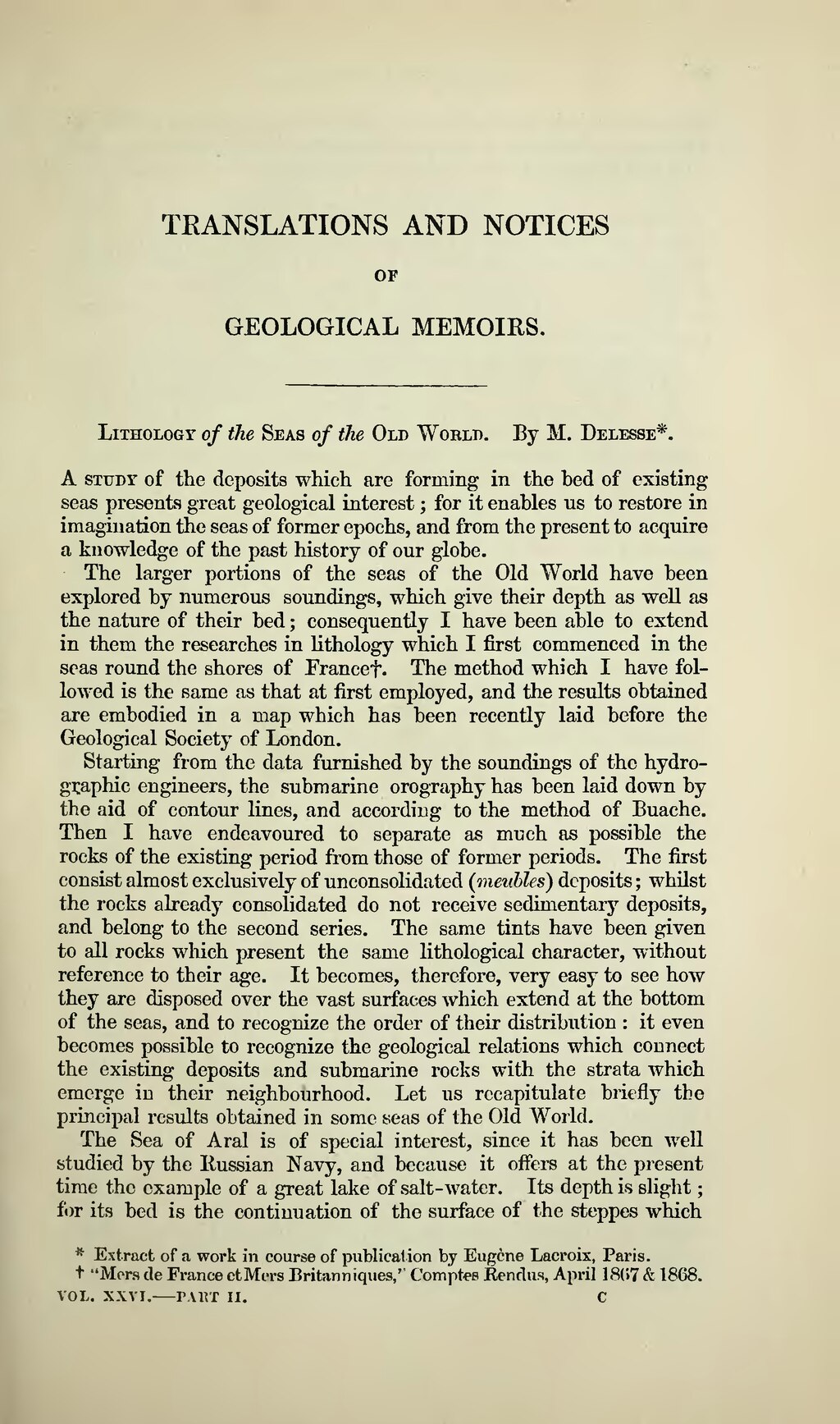TRANSLATIONS AND NOTICES OF GEOLOGICAL MEMOIRS.
Lithology of the Seas of the Old World. By M. Delesse*.
A study of the deposits which are forming in the bed of existing seas presents great geological interest ; for it enables us to restore in imagination the seas of former epochs, and from the present to acquire a knowledge of the past history of our globe.
The larger portions of the seas of the Old World have been explored by numerous soundings, which give their depth as well as the nature of their bed ; consequently I have been able to extend in them the researches in lithology which I first commenced in the seas round the shores of France†. The method which I have followed is the same as that at first employed, and the results obtained are embodied in a map which has been recently laid before the Geological Society of London.
Starting from the data furnished by the soundings of the hydrographic engineers, the submarine orography has been laid down by the aid of contour lines, and according to the method of Buache. Then I have endeavoured to separate as much as possible the rocks of the existing period from those of former periods. The first consist almost exclusively of unconsolidated (meubles) deposits ; whilst the rocks already consolidated do not receive sedimentary deposits, and belong to the second series. The same tints have been given to all rocks which present the same lithological character, without reference to their age. It becomes, therefore, very easy to see how they are disposed over the vast surfaces which extend at the bottom of the seas, and to recognize the order of their distribution : it even becomes possible to recognize the geological relations which connect the existing deposits and submarine rocks with the strata which emerge in their neighbourhood. Let us recapitulate briefly the principal results obtained in some seas of the Old World.
The Sea of Aral is of special interest, since it has been well studied by the Russian Navy, and because it offers at the present time the example of a great lake of salt-water. Its depth is slight ; for its bed is the continuation of the surface of the steppes which
- Extract of a work in course of publication by Eugene Lacroix, Paris.
† "Mors de France et Mers Britanniques," Comptes Rendus, April 1867 & 1868.
vol. xxvi. — Part II. c
